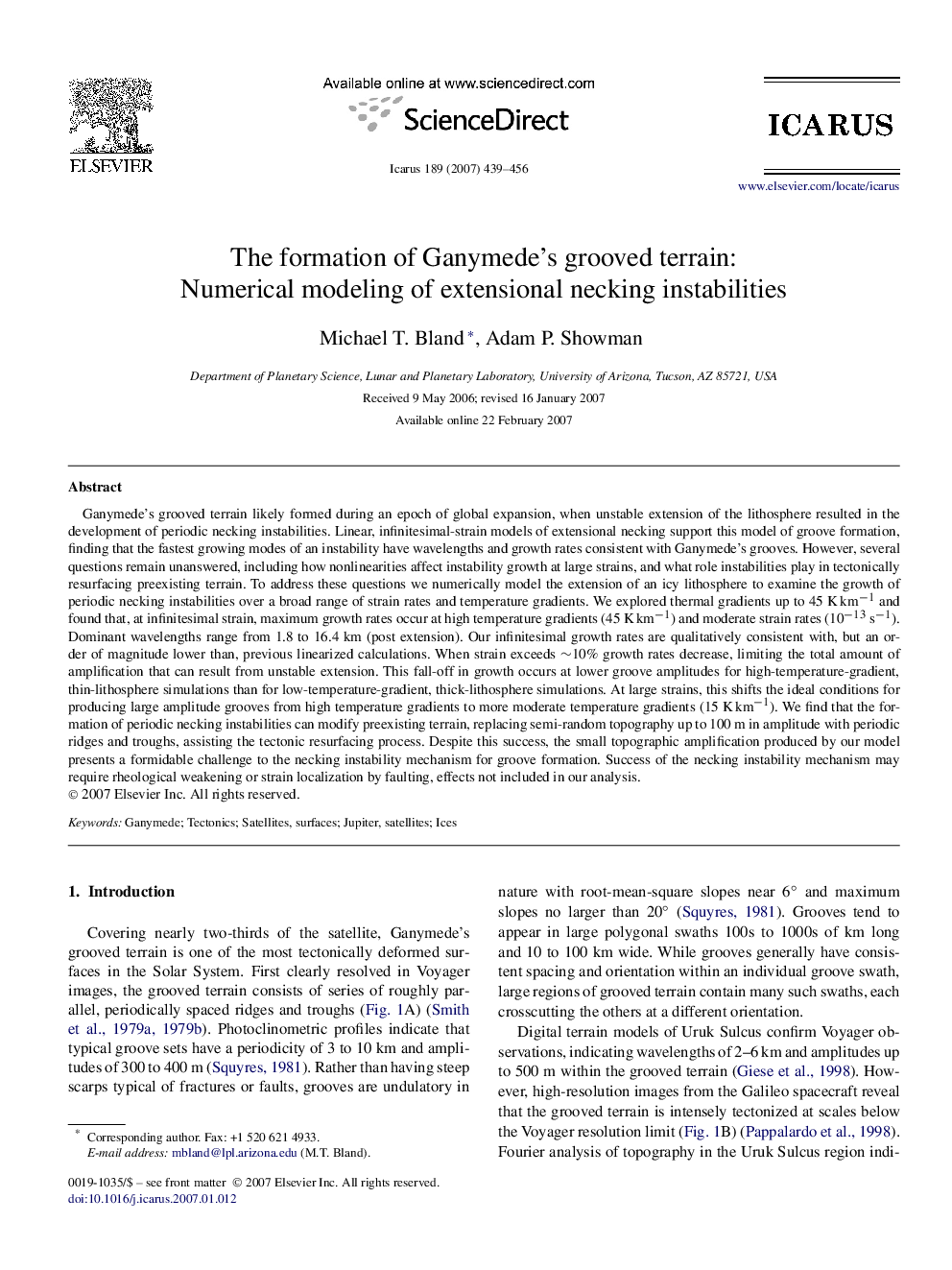| کد مقاله | کد نشریه | سال انتشار | مقاله انگلیسی | نسخه تمام متن |
|---|---|---|---|---|
| 1775659 | 1021202 | 2007 | 18 صفحه PDF | دانلود رایگان |

Ganymede's grooved terrain likely formed during an epoch of global expansion, when unstable extension of the lithosphere resulted in the development of periodic necking instabilities. Linear, infinitesimal-strain models of extensional necking support this model of groove formation, finding that the fastest growing modes of an instability have wavelengths and growth rates consistent with Ganymede's grooves. However, several questions remain unanswered, including how nonlinearities affect instability growth at large strains, and what role instabilities play in tectonically resurfacing preexisting terrain. To address these questions we numerically model the extension of an icy lithosphere to examine the growth of periodic necking instabilities over a broad range of strain rates and temperature gradients. We explored thermal gradients up to 45 K km−1 and found that, at infinitesimal strain, maximum growth rates occur at high temperature gradients (45 K km−1) and moderate strain rates (10−13 s−1). Dominant wavelengths range from 1.8 to 16.4 km (post extension). Our infinitesimal growth rates are qualitatively consistent with, but an order of magnitude lower than, previous linearized calculations. When strain exceeds ∼10%∼10% growth rates decrease, limiting the total amount of amplification that can result from unstable extension. This fall-off in growth occurs at lower groove amplitudes for high-temperature-gradient, thin-lithosphere simulations than for low-temperature-gradient, thick-lithosphere simulations. At large strains, this shifts the ideal conditions for producing large amplitude grooves from high temperature gradients to more moderate temperature gradients (15 K km−1). We find that the formation of periodic necking instabilities can modify preexisting terrain, replacing semi-random topography up to 100 m in amplitude with periodic ridges and troughs, assisting the tectonic resurfacing process. Despite this success, the small topographic amplification produced by our model presents a formidable challenge to the necking instability mechanism for groove formation. Success of the necking instability mechanism may require rheological weakening or strain localization by faulting, effects not included in our analysis.
Journal: Icarus - Volume 189, Issue 2, August 2007, Pages 439–456